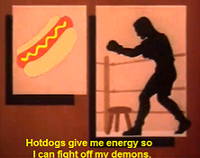Must be the newbie hikers or types that hike once in a life time!
___________________________________________________________
Hiking Around in Circles? Probably, Study Says
NYTIMES.com
With countless thousands of Americans hitting the hiking trails this month for one last summer adventure, it’s a sure bet that some of them will get lost along the way. Those fortunate enough to make it back may be convinced that they spent hours walking in circles.
Scientists in Germany reported Thursday that this often-described sense of lost-hiker déjà vu, of having inadvertently backtracked while wandering in the woods, is real. “People really do walk in circles,” said Jan L. Souman of the Max Planck Institute for Biological Cybernetics in Tübingen.
Dr. Souman, who studies multisensory perception, and his colleagues tracked the movements of volunteers sent into the wilds of a German forest and the desert sands of Tunisia. As long as the sun or moon was out, the volunteers were able to walk in a straight line, more or less. But on cloudy days or when the moon went down they looped back on themselves, often several times.
Under those conditions, Dr. Souman said, the brain appears to be lacking a fundamental visual cue to help make sense of the jumble of other data it is receiving.
“The brain has different sources of information for almost everything,” said Dr. Souman, who admitted to having walked in circles for hours once in the urban jungle that is Istanbul. There’s a complicated interplay of different senses, he said. Those cues — images flowing over the retina, the sense of acceleration or turning in the inner ear, even how the muscles and bones are moving — are combined in the brain to give a sense of where the body is going.
“But all those information sources are kind of relative,” he said. “They don’t tell you you are moving in the same direction as an hour ago.” For that, a view of the sun or moon or a prominent landmark like a distant mountaintop seems necessary. “You need those kinds of absolute cues,” he said.
The findings, published in the journal Current Biology, don’t surprise many back-country guides, rescuers and other hiking experts, who say that to avoid walking in circles or otherwise getting lost, hikers should rely on a simple compass, or a more complicated device like a G.P.S. unit, rather than themselves.
“You cannot trust your own senses at all,” said Carol Stone White, an author and editor who has chronicled hikers’ exploits, awesome and otherwise, in “Adirondack Peak Experiences” and other books.
Just about everybody who has spent considerable time in the woods has probably experienced being lost and feeling like they’ve become turned around, said Carroll M. Ware, a licensed Maine guide. “If they’ll admit it,” he added.
What sets the more experienced hiker apart from others is that they may be more aware of what’s happened. Tony Goodwin, editor of the Adirondack Mountain Club’s high peaks guidebook, recalled realizing he had walked in circles during a spring hike with a dog years ago. There was a little snow left on the ground, and he saw footprints.
“I thought, ‘Oh, there is somebody else walking along up here, too. And he’s got a dog, too!’ ” Mr. Goodwin said.
One way to try to walk in a straight line is to set your sights on a nearby tree, walk to it, find another tree in the same direction and walk to that, and so on. But even with a compass it’s difficult to maintain a straight course, as little errors will compound themselves. “You end up taking the scenic route, as we call it,” Mr. Ware said.
In their research, Dr. Souman and his colleagues found evidence to suggest that short-distance navigation techniques were being used, helping people walk straight for brief periods.
They also found that small deviations from a straight line occurred in either direction, disproving an earlier theory that if people veer in one direction or other while walking, it must be because one leg is slightly shorter than the other. And they found that as long as the deviations remained small, a meandering, slightly zigzagging route was the result. But when the errors started to build up in one direction, the hiker often ended up going in circles.
Mr. Ware and others said there was a sure way to avoid such an outcome — by heeding the one critical piece of advice for hikers who are hopelessly disoriented.
“Your job as the lost person is to sit down,” he said. “By moving you make everybody’s job more difficult.”
zoning out on trail
-
Taco

- Snownado survivor
- Posts: 6135
- Joined: Thu Sep 27, 2007 4:35 pm
Some of us try our damndest to get lost...
-
Taco

- Snownado survivor
- Posts: 6135
- Joined: Thu Sep 27, 2007 4:35 pm
Nah, not yet.  Can't find the motivation to do anything of the sort.
Can't find the motivation to do anything of the sort.
